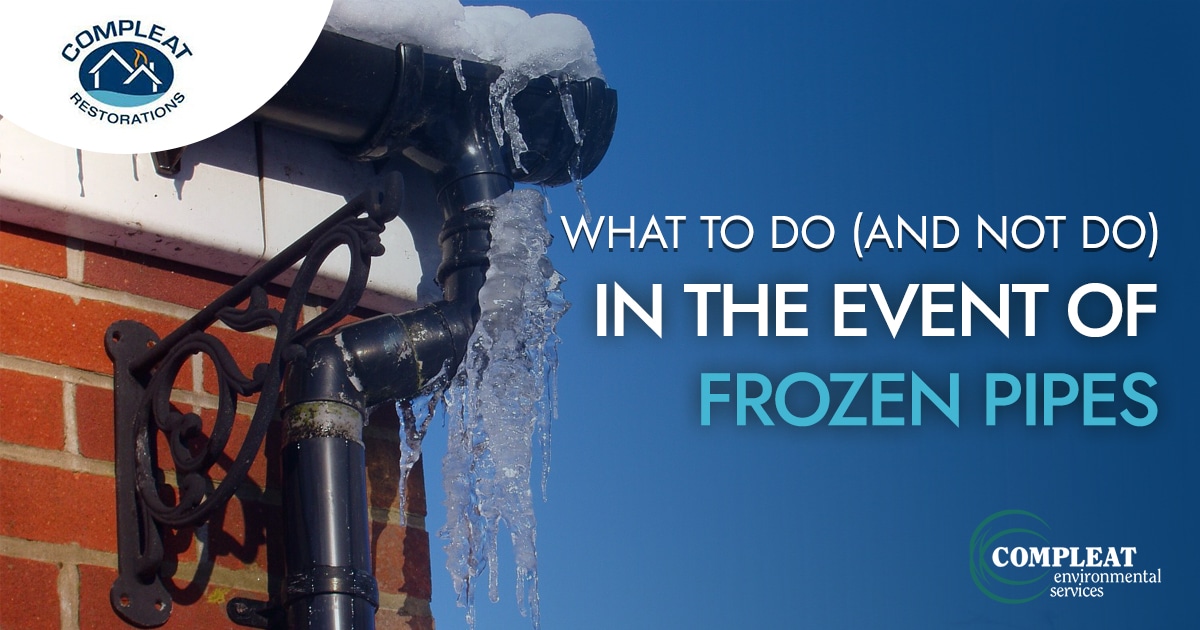One major issue that property owners need to prepare for in the winter months is frozen pipes. Freezing of the pipes not only leaves you without water but also causes damage to your pipeline system and other parts of your home since water expands as it freezes. Water damage can then lead to mold growth in your home which poses serious health concerns.
What are the dangers of frozen pipes?
When you see pipes showing signs of freezing or icing, it may not seem dangerous. However, there are two major concerns arising from frozen pipes:
- Lack of water. When pipes freeze, the flow of water gets blocked. Many things we do at home require water, and its absence will have a significant impact on our daily activities including cooking, washing dishes, and showering.
- Burst pipes. While not all pipes burst at freezing, old pipes and pipe bends are prone to it. If the pipe bursts, it may cause flood water damage inside your home, which could affect your fixtures and furniture. It may also affect your outside environment, which could create dangerous, slippery conditions. It also creates the perfect environment for the growth of molds and bacteria, thereby increasing health risks in your home.
How can I tell if my pipes are frozen?
With more than 250,000 U.S. households experiencing burst and frozen pipes annually, you need to be aware of the common warning signs. This can help you act sooner and avoid further damage to your plumbing system.
- Freezing temperatures. Even if the temperature outside is cold, it cannot cause frozen pipes if it has not reached 32 degrees Fahrenheit (0 degrees Celsius) or lower. When temperatures fall to this level, water starts freezing and so do your pipes.
- Frost on the pipe. A visible warning sign that your pipes are frozen is the building up of frost on the exterior of your pipes. Check exposed pipes, such as the ones under your kitchen sinks or in the shower for frost.
- No running water. When water stops flowing from your faucet in the winter months, this could very well mean that you have a frozen pipe. In some cases of only a partial freeze, water may still flow but only in trickles.
- Odd smell. If your drain pipes freeze, ice may block the odors from the food waste and grease in your drain. In time, the ice will melt and release strong odors into the room.
- Water damage. A frozen pipe may lead to structural damages, which can range from small leaks to burst pipes that can cause flooding. Since most pipes are hidden from plain sight, check your walls for stains, peeling, bubbling, odd odors, and unusual sounds that may be from hidden water damage.
What should I do if I notice my pipes are frozen?
Once you find that you have frozen pipes, quick action is necessary to prevent them from bursting and causing substantial damage. Here are some quick fixes to prevent this situation:
- Attempt to thaw the pipe yourself or call a plumber to do the work.
- Apply heat to the frozen section of the pipe by using a heating pad, a hairdryer, or towels soaked in hot water.
- Remember to keep the faucet open while you try to thaw your pipes. This allows the melted ice to flow. Continue to apply heat until the water starts flowing at a more regular rate.
- If your frozen pipe is buried in a wall or difficult to access, or your pipes do not thaw even after applying heat, call a plumber for assistance. The plumber can also assist you in checking other potentially frozen pipes in your home.
What should I avoid doing if my pipes are frozen?
It’s easy to panic when you suddenly discover something like a frozen pipe in your home or commercial property. Here’s a safety precaution: never use a blowtorch, a heater using gas or liquid fuels, or any open-flame device. These items may increase the risk of further pipe damage or even fire.
In addition, do not forcibly hit your pipes to crack the ice. Some pipes may already be old enough to become susceptible to blunt force, and so a light smack might lead to permanent damage.
How to prevent frozen pipes moving forward
Damage from frozen pipes may cause a lot of headaches to you and your family. To prevent frozen pipes, these are some of the things you can do.
- Set the home thermostat above 55 degrees Fahrenheit. Make sure to have your heating system checked for best condition before winter. Remember that water starts freezing at 32 degrees.
- Open the faucet that is farthest from your mainline and allow water to drip. This will help keep water moving and prevent pipes from freezing.
- Keep your home insulation well-maintained. Before the winter months, ask your contractor for an inspection of your home insulation system and arrange for repairs or replacements for areas found to be losing the most heat.
- Replace old and clog-prone plumbing. Not all pipes burst when they freeze, but old pipes that have built up debris over time are more prone to bursting. Check with your plumber about old pipes.
- Install insulation and heating cables for pipes that are most susceptible to freezing or that have frozen in the past. This may cause your utility bills to increase, but you will have a more lasting solution to your recurring pipe problems.
Best of all, hire a professional when the problem is small and manageable. The costs of fixing minor pipe concerns are way less than the costs of addressing burst pipes and severe water damage.
Contact us at Compleat Restorations if you need help or have some questions about your property. We are more than happy to assist you with pipe concerns and other restoration requests.

